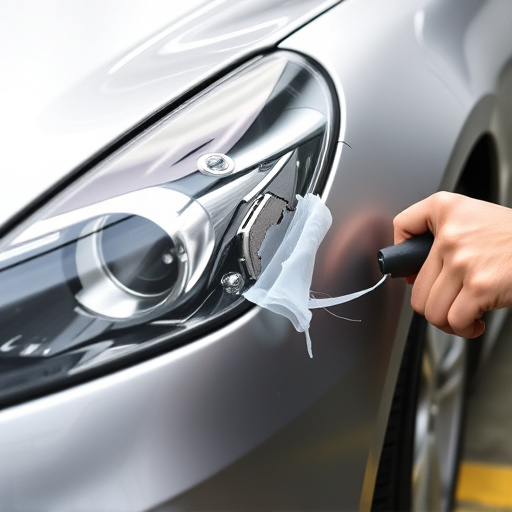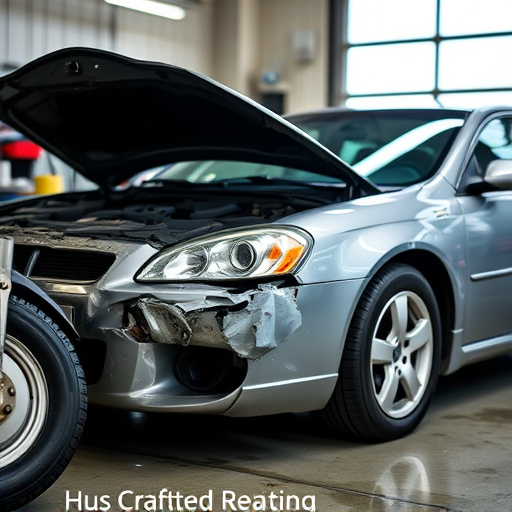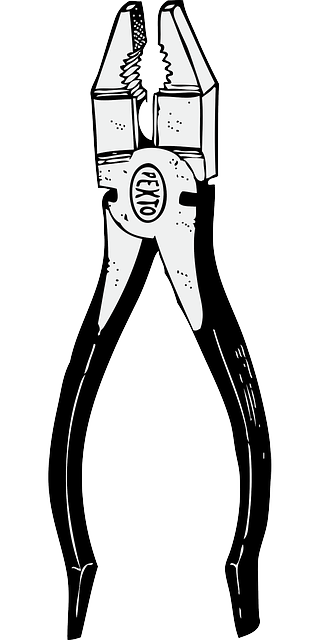The Tesla Body Computer manages vehicle functions and can be reset to factory settings to troubleshoot connectivity and app issues. This process is similar to repairing a car, and should be performed after trying other methods. Park your Tesla with the engine off, access the touchscreen menu, navigate to Software Updates or Vehicle Diagnostics, select 'Reset Body Computer', confirm, and restart. If issues persist, consult a professional collision repair shop for advanced assistance, including dent removal.
Tesla’s Body Computer acts as the vehicle’s central nervous system, managing connectivity and app functionality. When experiencing issues with connectivity or app failures, a reset of this critical component can be an effective solution. This article guides you through understanding the Tesla body computer, recognizing when a reset is necessary, and provides a detailed step-by-step process to perform a safe Tesla body computer reset.
- Understanding Tesla's Body Computer and Its Role in Connectivity
- When and Why to Perform a Reset: Common Issues and Solutions
- Step-by-Step Guide: Reseting Your Tesla's Body Computer Safely
Understanding Tesla's Body Computer and Its Role in Connectivity

The Tesla Body Computer, a sophisticated on-board system, acts as the neural network controlling various functions within your Tesla vehicle. Acting as both a hub and processor, it facilitates communication between different components, from steering and acceleration to infotainment and connectivity. When issues arise with connectivity or app functionality, it’s often a sign that something has disrupted this intricate interplay.
Resetting the Tesla Body Computer can serve as an effective solution for troubleshooting these problems. This process involves resetting the system to its factory settings, effectively erasing and rebuilding the connections that enable seamless vehicle operation and app integration. Thinking of it like a digital reboot, a Tesla body computer reset can be a crucial step in resolving connectivity hiccups and restoring your vehicle to optimal performance, utilizing professional vehicle repair services if necessary, much like repairing or restoring car damage to its original condition.
When and Why to Perform a Reset: Common Issues and Solutions

When and Why to Perform a Reset: Common Issues and Solutions
A Tesla body computer reset is often necessary when you encounter connectivity issues or app failures on your vehicle’s infotainment system. This can be particularly problematic for owners who heavily rely on their car’s navigation, entertainment, and other smart features. Performing a reset is a straightforward process that can resolve a range of common problems. These include intermittent Wi-Fi connections, slow response times from apps, and unexpected freezes or crashes.
Before attempting a Tesla body computer reset, ensure your vehicle is parked in a safe location and the engine is off. This procedure should be considered as a last resort after trying other troubleshooting methods, such as updating the software, restarting the car, or re-establishing a network connection. If issues persist despite these initial steps, a reset might be required to return your Tesla’s body computer to its optimal state, much like visiting a car body shop for repairs when your vehicle’s bodywork shows signs of strain.
Step-by-Step Guide: Reseting Your Tesla's Body Computer Safely

Resetting your Tesla’s body computer is a crucial step when dealing with connectivity issues or app failures. It’s a straightforward process that can be completed in just a few simple steps. Begin by ensuring your vehicle is parked and turned off, with all doors closed to avoid any unexpected activation. Next, locate the vehicle settings menu on your touchscreen, usually accessible through the main dashboard interface. Navigate to the ‘Software Updates’ or ‘Vehicle Diagnostics’ section, depending on your Tesla model. Here, you’ll find options related to resetting various systems, including the body computer.
Select the ‘Reset Body Computer’ option and confirm the action. Your Tesla might require a brief moment to complete the reset process. Once done, restart your vehicle and check if the connectivity and app-related issues have been resolved. If not, don’t hesitate to consult a professional collision repair shop or auto detailing service for further assistance, as they can also offer expert advice on addressing more complex technical problems, including dent removal, if needed.
Tesla vehicles rely on their body computers for seamless connectivity and functionality. When issues arise, performing a reset can be an effective solution. By understanding common problems and following a safe, step-by-step guide, owners can resolve connectivity or app failures, ensuring their Tesla operates optimally. Mastering the art of the Tesla body computer reset is a valuable skill that keeps your vehicle running smoothly in today’s digital age.














